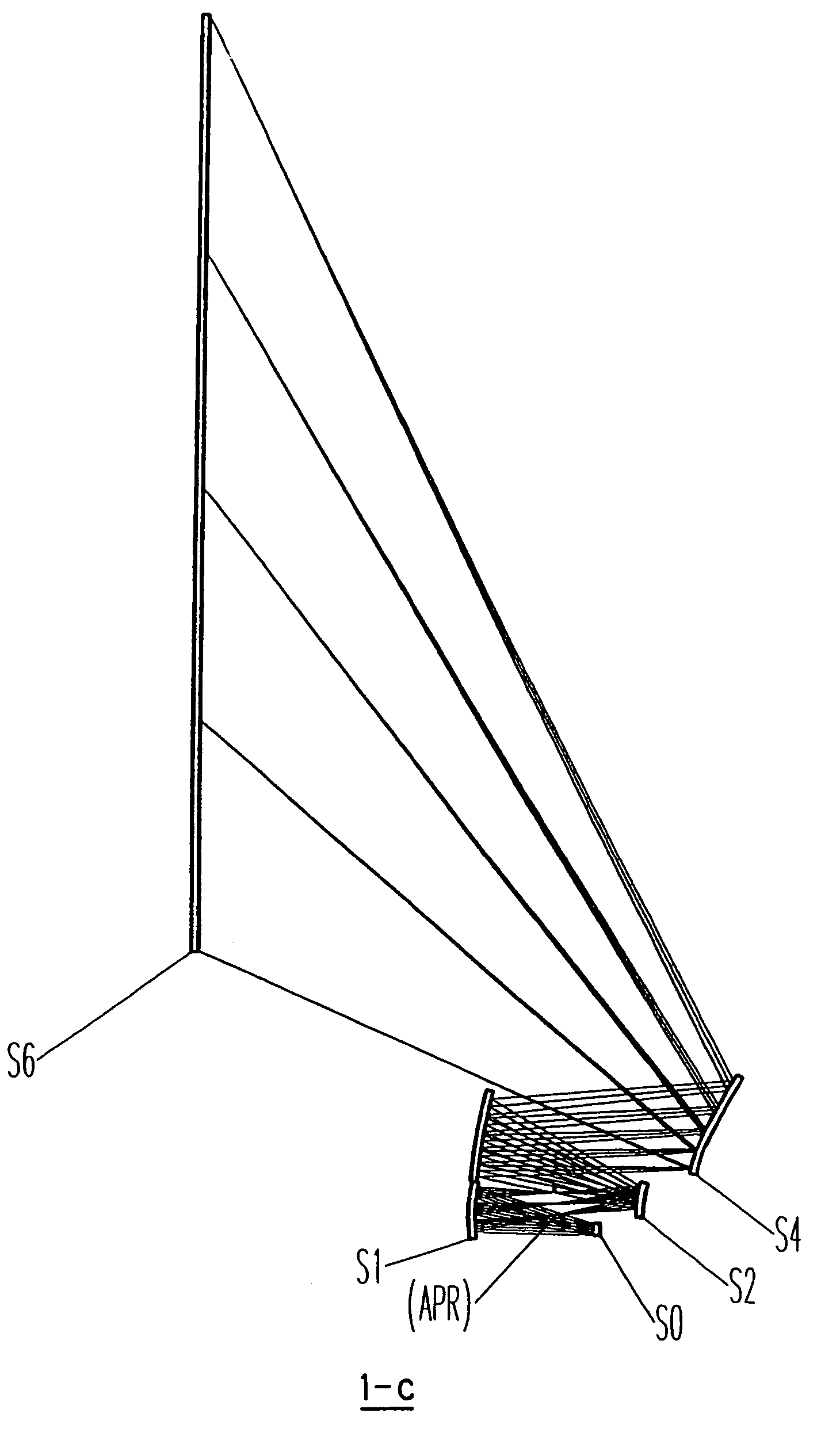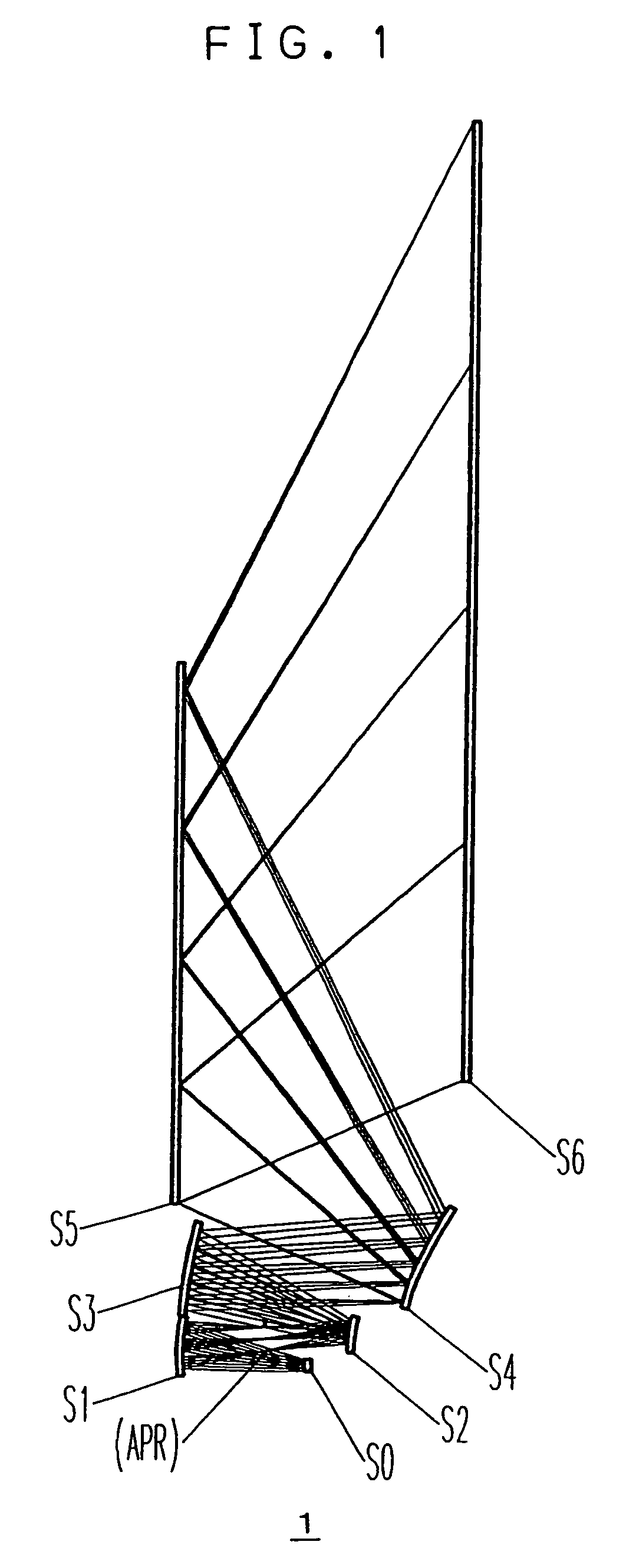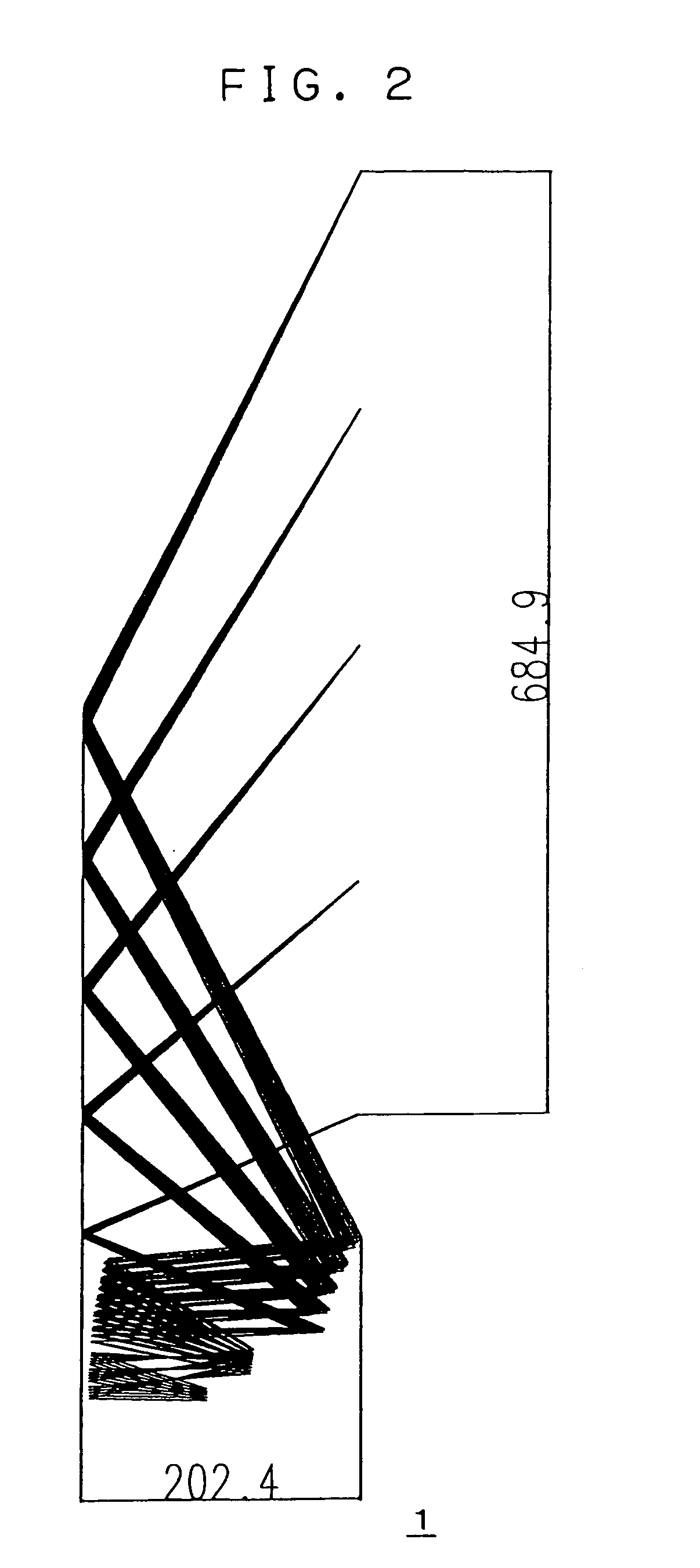Rear projection optical system
a projection optical system and optical system technology, applied in the field of rear projection optical systems, can solve the problems of difficult to slim down the apparatus below a certain thickness, entail high cost, and the projection optical system itself is larger, and achieves the effect of high imaging performan
- Summary
- Abstract
- Description
- Claims
- Application Information
AI Technical Summary
Benefits of technology
Problems solved by technology
Method used
Image
Examples
seventh embodiments
First to Seventh Embodiments
[0075]First, as a first to a seventh embodiment of the invention, practical examples (Examples 1 to 7, respectively) of oblique projection optical systems will be presented below with reference to their actual construction data and other data. The oblique projection optical systems 1 to 7 of Examples 1 to 7 are all composed of four powered curved-surface mirrors and one non-powered flat-surface mirror. These oblique projection optical systems 1 to 7 are all designed to lead rays of light from a rectangular display surface having longer sides in the width direction thereof to a projection surface by reflecting the rays with the individual mirrors in such a way as to deflect the rays in the height direction of the display surface and make the rays converge on the projection surface. As a result, a magnified image of the image displayed on the display surface is formed (projected) on the projection surface, in a rectangular area thereon that is substantially...
example 1
[0081]FIGS. 1 to 4 show the construction and optical path of the oblique projection optical system 1 of Example 1, and Tables 3 to 10 show the construction data thereof. Tables 3 to 10 each list the data of the surface referred to by the symbol noted at the top of the table. N0 and N1 respectively represent the refractive indices of the media before incidence and after incidence (i.e. after reflection) on a surface. “Position” indicates the position of the origin of the corresponding local coordinate system in the absolute coordinate system. In Table 5, which lists the data of the pupil plane APR, R represents the radius of the pupil (aperture stop).
[0082]It is to be noted that, also in the other examples described later, what their construction data represents is the same as with Tables 3 to 10.
[0083]FIG. 1 is a sectional view taken along the x-y plane, and shows the surfaces S0 to S6 together with, among the rays emanating from the center in the width direction of the display surf...
modified example 1 of example 1
[0096]FIGS. 7 and 8 show a sectional view and a top view, respectively, of the oblique projection optical system 1-b of a modified example of the oblique projection optical system 1 of Example 1. The oblique projection optical system 1-b differs from its base model in that the surfaces starting with the display surface S0 and ending with the flat-surface reflecting surface S5 are shifted toward the projection surface S6.
[0097]As will be clear from FIG. 7, the greater part of the reflecting surface S4 is located opposite to the flat-surface reflecting surface S5 with respect to the projection surface S6, and thus a lower central portion of the oblique projection optical system 1-b protrudes a little from the projection surface S6. As a result, as shown in Table 2 described earlier, the thickness D of the optical path in the optical system as a whole is larger, but, as will be understood through comparison between FIGS. 7 and 1, the distance between the projection surface S6 and the f...
PUM
 Login to View More
Login to View More Abstract
Description
Claims
Application Information
 Login to View More
Login to View More - R&D
- Intellectual Property
- Life Sciences
- Materials
- Tech Scout
- Unparalleled Data Quality
- Higher Quality Content
- 60% Fewer Hallucinations
Browse by: Latest US Patents, China's latest patents, Technical Efficacy Thesaurus, Application Domain, Technology Topic, Popular Technical Reports.
© 2025 PatSnap. All rights reserved.Legal|Privacy policy|Modern Slavery Act Transparency Statement|Sitemap|About US| Contact US: help@patsnap.com



